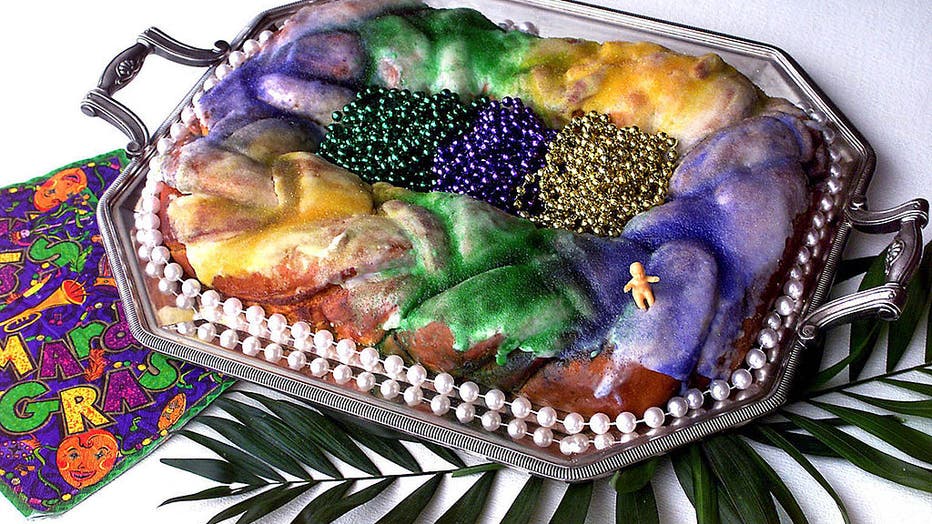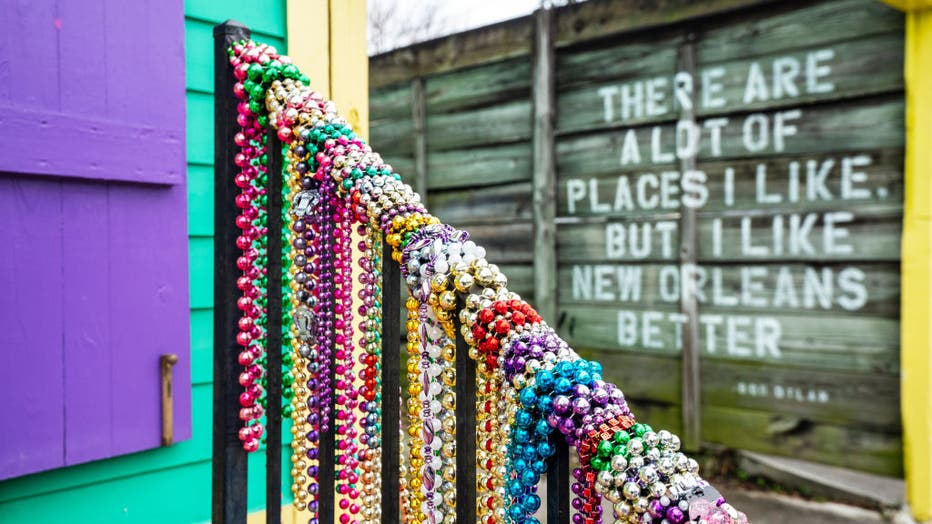Mardi Gras 2022: ‘Fat Tuesday’ celebrations return as COVID-19 cases drop
Mardi Gras couldn’t have come at a better time during the ongoing COVID-19 pandemic as cases and hospitalizations drop and states ease restrictions.
Revelers decked out in traditional purple, green and gold came out to party on Fat Tuesday in New Orleans’ first full-dress Mardi Gras since 2020. The fun included back-to-back parades across the city and marches through the French Quarter and beyond, with masks required only in indoor public spaces.
The return of Carnival season has been a much-needed boost for business in New Orleans, where the famed restaurants and music venues were restricted or closed for months. The crowd on Sunday, when the huge Krewe of Bacchus paraded, "was a record for us in the 10 years we’ve been open," said Thomas Houston, bar manager at Superior Seafood and Oyster Bar, located at the start of the truncated parade route.
RELATED: Mardi Gras celebration kicks off in Galveston for first time since COVID-19 pandemic hit
Mobile, Alabama, which calls itself the birthplace of Mardi Gras, also missed throwing a full-blown Carnival last year because of COVID-19, and some restaurant managers say they are still having a hard time filling jobs, leading to the odd sight of empty tables while people line up out the door in places. But music already was blaring downtown hours before the first Fat Tuesday parade as families used lawn chairs to stake out spots behind police barricades on Government Street, a main drag through the city.
Parades were canceled last year because officials realized that tightly packed crowds in 2020 had created a superspreader event, making the city an early Southern hot spot for COVID-19. Instead, people decorated their houses to look like floats as a way to keep the Carnival spirit alive.
The history of Mardi Gras and Fat Tuesday
According to Mardi Gras New Orleans, origins can be traced to medieval Europe, passing through Rome and Venice in the 17th and 18th centuries to the French House of the Bourbons.
From here, the traditional carnival of the "Boeuf Gras," or fatted calf, followed France to the country’s colonies.
Mardi Gras, the celebration that marks the day before Lent— a period of fasting in the Christian religion— has long been associated with New Orleans but was actually started in Mobile, Ala., in 1699. New Orleans was not founded until 1718.
From 1762, when the Spanish ruled the city, to 1800, and then between 1803 until 1837, after the U.S. took over, large celebrations and rituals associated with the carnival were banned.
RELATED: Diana Ross, Khalid headline Universal Orlando's Mardi Gras 2022 concerts
According to History.com, the first recorded Mardi Gras street parade in the Big Easy occurred in 1837.
Louisiana is the only one to have officially declared Mardi Gras a legal holiday.
According to HITC, the ‘fat’ in the name of the holiday refers to the consumption of fatty foods during the festival before some of them are forbidden during Lent.
The story behind the king cake
King cake, the slightly sweet cinnamon bread synonymous with Mardi Gras, usually comes with a trinket hidden inside.
In the 1950s, a New Orleans bakery popularized hiding a porcelain baby inside the cake, a practice that reportedly traces back to 18th-century France, supposedly to represent Jesus, Eater reports.

Let the good times roll with Naw'lins-inspired Mardi Gras treats. Pictured, a traditional New Orleans king cake is like the Big Easy itself: Colorful, gaudy and sweet! (Photo by Charles Curtis/Duluth News-Tribune/Tribune News Service via Getty Images
Today, the baby figurine — which can be made of plastic — is often hidden inside the king cake, and the person who ends up finding the baby in his/her slice is responsible for providing the king cake the next year.
King cakes are everywhere. People bring them to the office. Lawyers ship them to clients. Families eat them watching the parades. Neighborhood bars serve them — nothing goes better with beer than dough, cinnamon and frosting.
King cakes can be found as "rosca de reyes" in many Spanish-speaking countries and "galette de rois" in France.
The history behind the colors and the beads
Mardi Gras New Orelans said the Krewe of Rex is one of the oldest participating groups in Mardi Gras.
Historians believe the colors date back to 1872 during the first Rex parade. The Rex’s King of the Carnival chose purple, green and gold to be draped over balconies, but it’s not clear why those specific colors were chosen.

The hand rail of a home in the Bywater is wrapped with Mardi Gras beads on February 15, 2021 in New Orleans, Louisiana. Due to the COVID-19 pandemic cancelling traditional Mardi Gras activities, New Orleanians are decorating their homes and businesse
In 1892, the Rex organization gave symbolism behind the colors saying purple represents justice, green represents faith, and gold represents power.
Punchbowl.com said beads weren’t a part of the celebration until the 1800s when the inexpensive necklaces were thrown into crowds from the parade. Becoming an instant hit with tourists, Mardi Gras fans soon started decorating themselves in the beads to celebrate the occasion.
The Associated Press and FOX News contributed to this story. This story was reported from Los Angeles.

